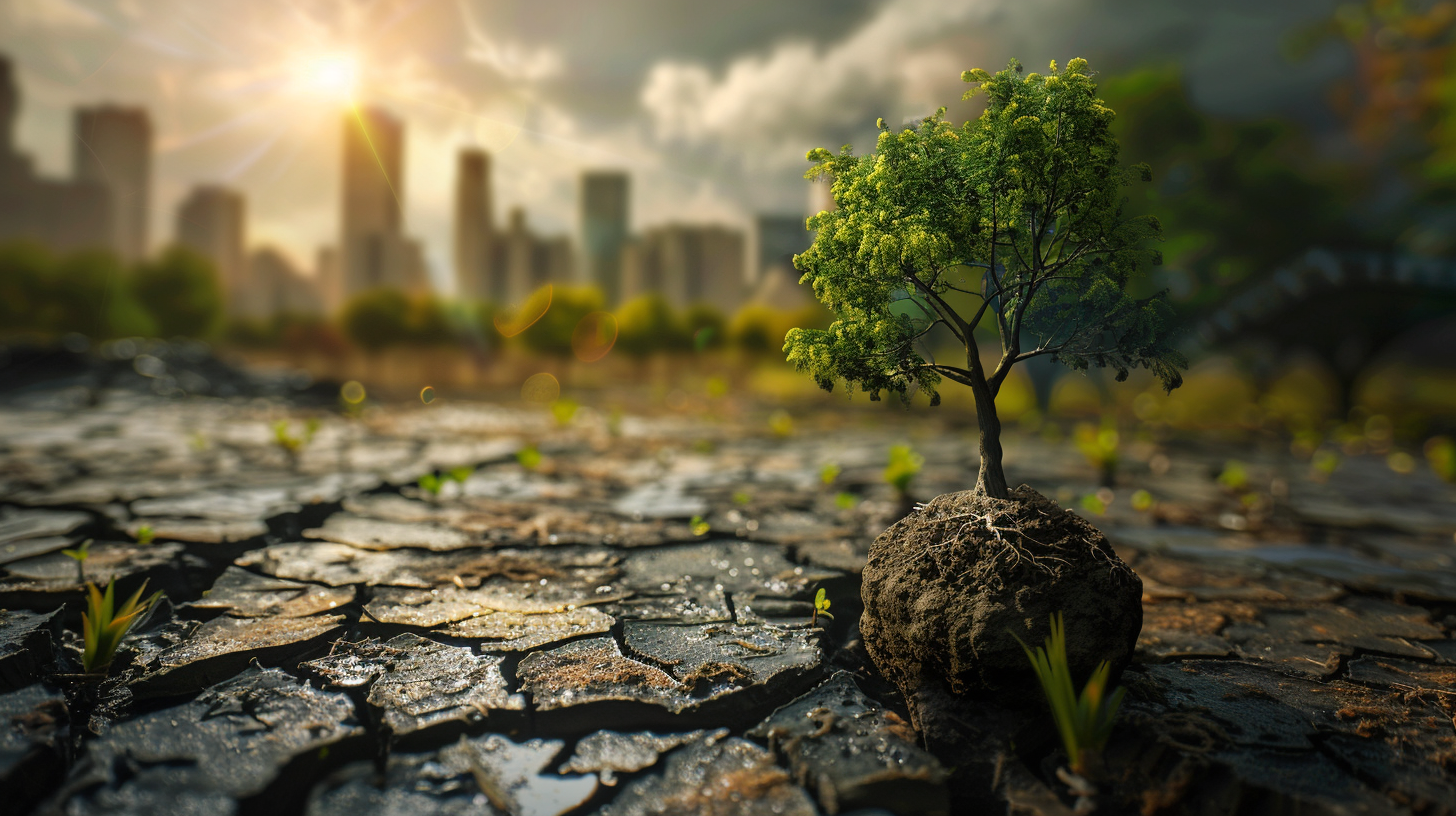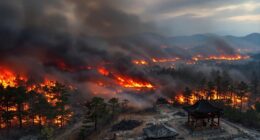Table of Contents Show
We’ve often heard the theory that human activities are the main culprits behind global warming, but how much truth lies in this assertion? In exploring the science of climate change, we’ll unpack the mechanics of the greenhouse effect, the role of carbon dioxide and other gases, and the impact of our actions on the planet’s climate. As we navigate through these topics, we’ll uncover how interconnected our world truly is, from ocean depths warming to ice caps melting. This journey will not only highlight the urgency of the situation but also point towards potential solutions that lie within our grasp. Let’s explore together how our collective choices shape the future of our planet.
Key Takeaways
- Human activities, especially burning fossil fuels, intensify the greenhouse effect and accelerate global warming.
- Methane, nitrous oxide, and fluorinated gases, though less abundant than CO2, significantly contribute to the Earth’s warming.
- Rising greenhouse gas emissions lead to melting ice caps, rising sea levels, and more extreme weather patterns.
- Mitigating climate change requires a shift to renewable energy, enhanced efficiency, and sustainable land and ocean practices.
The Greenhouse Effect Explained
At the heart of climate change lies the greenhouse effect, a vital process that’s been intensified by human activities. It’s a fundamental aspect we’ve got to grasp if we’re to understand the wider conversation about global warming and our role in it. Basically, this effect is what keeps our planet warm enough to support life as we understand it. Without it, we’d be living on a frozen rock hurling through space. However, there’s a fine line between a cozy, life-sustaining warmth and the feverish temperatures we’re increasingly facing.
Here’s the deal: the sun beams down solar energy, which hits Earth’s surface. Some of this energy is absorbed, warming the planet, while the rest bounces back towards space. Now, instead of all this outbound energy escaping, greenhouse gases in the atmosphere trap some of it, keeping our planet at a habitable temperature. It’s nature’s own heating system, perfectly balanced over millennia.
But, we’ve thrown this system out of whack. Our factories, cars, and deforestation efforts are pumping out an excess of these greenhouse gases, thickening this atmospheric blanket more than it should be. This means more heat is trapped, leading to a rise in Earth’s average temperature. We’re basically turning up the thermostat on our global home, and the consequences are something we’re all grappling with.
Understanding this mechanism is important. It’s not about shackling our progress but about steering it in a way that guarantees our freedom to thrive on a healthy, vibrant planet. We’ve got the power to realign with this delicate balance, and it starts with recognizing our impact on the greenhouse effect.
Carbon Dioxide’s Role in Warming
Among the greenhouse gases contributing to climate change, carbon dioxide (CO2) plays a pivotal role in the warming of our planet. This isn’t just about understanding science; it’s about recognizing the power we have to influence our future. CO2’s significance can’t be overstated, and here’s why:
- Sources: We’re all part of this. From burning fossil fuels for electricity, heat, and transportation to deforestation that reduces the Earth’s capacity to absorb CO2, our daily choices directly impact CO2 levels.
- Longevity: CO2 hangs around. Unlike some pollutants that wash away with the next rain, CO2 stays in the atmosphere for up to a century. This means that the CO2 we emit today will warm the planet for generations.
- Volume: It’s a numbers game. CO2 is the most abundant of the human-caused greenhouse gases, making its reduction critical for slowing climate change.
- Feedback Loops: This isn’t a one-way street. Increased CO2 levels lead to higher temperatures, which can release more CO2 from natural reserves, like permafrost, creating a cycle that accelerates warming.
- Global Impact: We’re all in this together. The effects of CO2 aren’t limited by borders. Its impact on the global climate means that actions taken in one part of the world affect everyone.
We’re at a crossroads, and we have the freedom to choose our path. It’s about making informed choices, understanding the weight of our actions, and embracing our collective responsibility. Let’s use our knowledge as power, and turn the tide on climate change.
Methane and Other Greenhouse Gases
Having explored the significant role of carbon dioxide in global warming, we now shift our focus to methane and other greenhouse gases, which also play key roles in climate change. Methane, though less abundant, is far more potent than carbon dioxide in trapping heat in our atmosphere. It’s about 25 times more effective over a 100-year period. This makes it a critical target for climate action, as reducing methane emissions can have a swift and significant effect on slowing global warming.
We can’t overlook nitrous oxide either, another powerful greenhouse gas. It’s about 300 times more potent than carbon dioxide and primarily comes from agricultural activities, such as the use of synthetic fertilizers and the management of animal waste. These gases, along with fluorinated gases used in industrial applications, form a complex web of contributors to the greenhouse effect that’s heating our planet.
We’re all seeking freedom – freedom to live on a planet that’s safe, healthy, and sustainable. Understanding the roles of these gases offers us a path to combat climate change effectively. By acknowledging their impact, we’re better equipped to tackle the challenge head-on. It’s not just about carbon dioxide; it’s about a collective effort to address all sources of greenhouse gases.
Human Activities and Climate Impact
We’ve seen how greenhouse gases like methane contribute to climate change, but it’s essential we also understand the significant impact of human activities. From the burning of fossil fuels to widespread deforestation and the sharp rise in industrial emissions, our actions are at the heart of the climate crisis. Each of these points not only highlights the problem but also points us towards potential solutions.
Fossil Fuels’ Dire Role
Fossil fuel combustion, a cornerstone of modern industrial activity, greatly accelerates climate change by releasing vast amounts of carbon dioxide into the atmosphere. We’re keenly aware of the urgent need to shift our energy sources to protect our planet and secure our freedom to live on a healthy Earth. Here’s how fossil fuels are affecting our world:
- They’re the largest source of carbon dioxide, a potent greenhouse gas.
- Power plants and vehicles heavily rely on them, making global reduction efforts challenging.
- Mining and drilling for fossil fuels disrupt ecosystems.
- The energy sector’s dependency creates economic vulnerabilities.
- Pollution from burning fossil fuels harms health globally.
We’ve got the power to change this trajectory by embracing renewable energy sources, enhancing efficiency, and advocating for policies that limit fossil fuel use.
Deforestation’s Global Impact
Deforestation, the widespread clearing of Earth’s forests, drastically amplifies climate change impacts and disrupts human lives around the globe. We’re cutting down our natural carbon sinks, releasing vast amounts of greenhouse gases into the atmosphere, and reducing biodiversity at an alarming rate. It’s not just about losing trees; it’s about losing our planet’s ability to maintain a stable climate, protect against flooding, and preserve the rich tapestry of life that calls these forests home. We need to recognize that our freedom to thrive in the future depends on the choices we make today. By standing against deforestation, we’re not just saving trees; we’re safeguarding our freedom to live on a healthy, vibrant planet. It’s a fight we can’t afford to lose.
Industrial Emissions Escalation
While stopping deforestation is vital, addressing the surge in industrial emissions also plays a key role in combating climate change. We can’t overlook how our industrial activities are ramping up the planet’s temperature. It’s about time we tackle this head-on, embracing changes that foster a healthier planet. Let’s consider:
- Reducing reliance on fossil fuels
- Innovating in renewable energy technologies
- Enhancing energy efficiency in manufacturing
- Implementing stricter emissions regulations
- Encouraging sustainable consumption and production
Ocean Warming and Acidification
As the planet heats up, our oceans are not only getting warmer but also more acidic. This trend is not just a concern for marine life; it’s a direct challenge to our freedom to enjoy the bounties of the sea and to maintain a planet that supports diverse life.
The warmth we’re adding to the atmosphere doesn’t just hang around in the air; most of it dives deep into the ocean. This heat absorption by the ocean disrupts marine ecosystems in ways we’re just beginning to understand. Coral reefs, which are the nurseries of the ocean, suffer from bleaching, a stress response to the warmer temperatures. This doesn’t just affect the corals; it ripples across the marine food web, impacting fish populations that we rely on for food and economic activities.
Meanwhile, the acidification of the oceans, driven by our carbon dioxide emissions, compounds these challenges. As CO2 dissolves in seawater, it forms carbonic acid, lowering the water’s pH. This shift makes it harder for shellfish and coral to form their skeletons and shells, threatening their survival. It’s a stark reminder that our actions on land echo through the marine environment, limiting its ability to sustain life and provide for us.
We’re at a critical juncture where acknowledging the interconnectedness of our actions with the health of the oceans is non-negotiable. It’s about asserting our responsibility to make informed choices. Through innovative solutions and proactive measures, we can mitigate these impacts, ensuring the oceans remain a vibrant and essential part of our planet’s ecosystem. Let’s embrace this challenge as an opportunity to affirm our commitment to freedom, for ourselves and for future generations.
Melting Ice and Rising Sea Levels
The relentless melting of ice caps and glaciers around the world is driving a significant rise in sea levels, posing a direct threat to coastal communities and ecosystems. As we explore deeper into the impacts of this phenomenon, it’s important to recognize our collective responsibility in addressing the root causes and mitigating the consequences.
Here’s what’s happening:
- Polar regions are losing ice at an unprecedented rate, with both the Arctic and Antarctic shedding billions of tons of ice each year.
- Glaciers, from the Himalayas to the Alps, are retreating, reducing fresh water supplies for millions who depend on them.
- The thermal expansion of seawater, as it warms, further contributes to rising sea levels, compounding the issue.
- Low-lying islands and coastal cities face increased flooding, threatening homes, livelihoods, and entire ways of life.
- Saltwater intrusion into freshwater systems jeopardizes agriculture and drinking water sources, making it harder for communities to sustain themselves.
We’re in this together, and the freedom to act now is ours. We’ve seen what’s at stake, and the urgency couldn’t be clearer. It’s about safeguarding our homes, preserving our environment, and securing a livable future for generations to come. The choices we make today will determine the kind of world we’ll live in tomorrow. Let’s embrace the challenge and turn the tide on rising sea levels by championing sustainable practices and advocating for policies that reduce greenhouse gas emissions. Together, we can make a difference.
Extreme Weather Patterns
Building on our understanding of rising sea levels, we now turn our attention to the increasing frequency and severity of extreme weather patterns. As we investigate further, it’s essential to appreciate how these patterns not only disrupt our daily lives but also challenge our quest for freedom. The freedom to live, work, and play in environments that are safe and predictable is increasingly under threat.
Extreme weather, ranging from blistering heatwaves to devastating hurricanes, directly correlates with the warming of our planet. This isn’t just about the inconvenience of a rained-out barbecue; it’s about the fundamental right to a stable and secure environment. Let’s look at some data that underscores this point:
| Type of Extreme Weather | Impact |
|---|---|
| Heatwaves | Increased mortality, strained power grids |
| Hurricanes | Widespread destruction, economic losses |
| Floods | Displacement, waterborne diseases |
These examples highlight the tangible effects of climate change on our weather patterns. We’re seeing more than just statistical anomalies; we’re witnessing a shift in the very fabric of our climate system. This shift is not an abstract problem for future generations to solve. It’s here, it’s now, and it demands our immediate attention.
We have the power to shape the narrative around climate change. By understanding the science and acknowledging the impact of our actions, we can pave the way for a future where freedom from the adverse effects of extreme weather is a reality for all.
Mitigation Strategies and Solutions
To effectively combat the rise in extreme weather events, we must explore and implement a variety of mitigation strategies and solutions. Understanding the urgency, we’re diving into practical actions we can all partake in. It’s about embracing freedom — the freedom to choose a sustainable path forward for our planet. Here’s what we can do:
-
Shift to Renewable Energy Sources: Let’s move away from fossil fuels and embrace wind, solar, and hydro power. It’s a powerful step towards reducing our carbon footprint.
-
Enhance Energy Efficiency: We’ve got to make our homes, vehicles, and industries more energy-efficient. It’s not just about saving energy; it’s about maximizing our freedom to use it wisely.
-
Promote Reforestation and Protect Forests: Trees are our allies. By planting more and safeguarding existing forests, we sequester more carbon and preserve biodiversity.
-
Adopt Sustainable Agriculture Practices: We can change the way we farm. By using techniques that reduce emissions, we secure food security and protect our freedom to thrive.
-
Encourage Carbon Pricing: Implementing carbon pricing incentivizes the reduction of greenhouse gas emissions. It’s a clear signal to businesses and individuals to innovate and reduce their carbon footprint.
As we rally around these strategies, we’re not just mitigating climate change; we’re securing our freedom to live on a healthier planet. It’s about making choices that secure a sustainable and prosperous future for all. Let’s embrace these solutions with open arms and a committed heart.
Conclusion
In wrapping up, we’ve journeyed through the science behind global warming, understanding its complex mechanisms and dire consequences. It’s clear that our actions are at the heart of this crisis. But, like a phoenix rising from the ashes, there’s hope in collective action and innovative solutions. By embracing change and championing sustainability, we can steer our planet towards a brighter, healthier future. Let’s not wait for tomorrow to act; the time to fight climate change is now.








